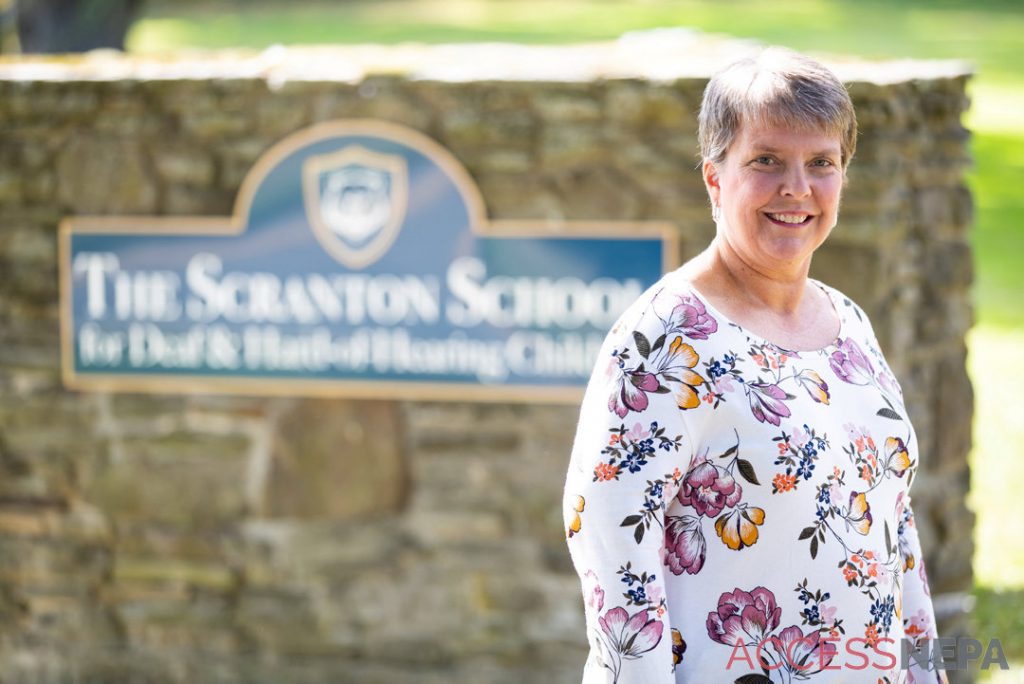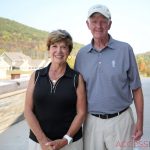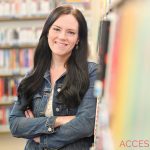Mary Ann Stefko looked at returning to Northeast Pennsylvania as a way to give back to the people who helped her at the start of her career.
The Clarks Summit native, who now lives in Scranton, had worked for the Western Pennsylvania School for the Deaf for more than 20 years when the school decided to send a team to NEPA, where the state had relinquished control of what is now the Scranton School for Deaf & Hard-of-Hearing Children. And so Stefko joined five coworkers who in 2009 headed east, where the Pittsburgh-based school was to oversee the work at the Scranton one.
“I think a part of my heart was always here,” said Stefko, an early intervention therapist and outreach coordinator. “But the opportunity didn’t present itself (earlier). And that’s, I think, why I jumped so quickly at it.
“When we started out, we were a team of six people from Pittsburgh who came here … and said, ‘We’re going to make this school happen.’”
Stefko developed an interest in sign language as a child through a deaf family friend. Describing herself as “an out-of-the-box kid,” Stefko began learning to sign at around age 5. During middle and high school, Stefko volunteered at the Scranton School, where she helped with the activities program in the dormitory and “developed some amazing friendships with the students there,” she said.
“I learned sign language at the knee of some of those deaf and hard-of-hearing house parents,” Stefko said.
After graduating from Abington Heights High School, Stefko went on to earn a bachelor’s degree in communication sciences and disorders and a master’s degree in counseling education from Penn State University and also holds a national sign language interpreter certification. While at Penn State, a professor who knew of her passion for sign language and working with children with hearing disorders, suggested she intern at the Western PA School. She ended up getting hired there and never looked back.
“It was my first job; it’s been my only job,” Stefko said. “I would never want to have had a different first job. It’s been just an amazing ride.”
Stefko started with the school as a communications specialist doing one-on-one support for students to develop their sign language and spoken-language skills, in addition to teaching sign language courses. When the school began a “mainstream program,” she spent 15 years as its coordinator, focusing on inclusion and diversity in the workplace, which involved teaching sign language to corporations.
The school also developed a sign-language program specific to medical professionals, an initiative Stefko feels grateful to have brought with her to the eastern part of the state. The Scranton School now collaborates with Geisinger Commonwealth School of Medicine, which Stefko said “has been wonderful for the medical students.”
“I kind of took a special interest because so many of my kids were so involved in the medical community due to their hearing loss,” she said.
Although Stefko loved the two decades she spent in Pittsburgh, returning to where she grew up “was my chance to give back to all of those deaf people who taught me signs, who were patient with me, who supported me,” she said.
“This was where I felt I could make the biggest difference, to make sure that the kids and the families here in NEPA have the same opportunities and the same assets that children and families in Pittsburgh had,” Stefko said. “And gratefully I had the (schools) behind me. … I knew the support we would have from Western Pennsylvania School for the Deaf and everything they had to offer families, so for me it was just, ‘Let’s build on it. Bring everybody to the table, and let’s see what we can do up here.’”
Stefko focuses on early intervention and outreach, which involves coordinating services for children from birth to 3 years old. While she chose to work with kids with hearing issues, she knows that for most parents she meets, the first time they encounter someone with those conditions is when they meet their babies.
“It’s a rollercoaster. I can only imagine what those feelings are, but I try always to be hopeful,” Stefko said. “I try always to connect them with parents who are further along the journey who can actually say, ‘Yes, I get it. Yes I’ve been there, and you’re going to be OK.’
“I have some amazing former students who are grown up now who I connect my families to … and connect families to each other. Even during COVID, we’ve done virtual playdates where the families have still been connected to each other, where they can share the ups and they can share the downs.”
Stefko aims to empower parents to be their children’s best advocates moving forward while also teaching the babies and toddlers and hooking families up with resources.
The most rewarding moments for Stefko have come when her students have gone on “to new and exciting things” — first experiences like a baby signing “mommy” or “milk” or a child with a cochlear implant hearing someone speak.
“You celebrate the little steps. Those are big,” she said. “The first time that I point to something and they turn their head and look at it, I know they’re making that language connection.”
In addition to teaching American Sign Language as an adjunct professor at University of Scranton since 2013, Stefko takes pride in her membership on an advisory board for early hearing and detection intervention through the state Department of Health.
“We have been able to start a professional learning community up here in the Northeast region, which has been incredibly successful,” she said, noting it brings together parents, school leaders, doctors, therapists and audiologists to “look how we can improve and enhance quality of care for these students.”
She even presented about the topic at a national convention in Kansas City, sharing what worked in NEPA. And she praised the various professionals “who have come together to support my adventures,” noting that their openness to helping is “what makes this region so unique.”
“What I do, I don’t see it as anything special,” Stefko said. “I see my kids as really special. I see their families as really special. I see the community partners who have stepped up to help me as really special.”
Looking back, Stefko gives credit to her parents, Helen and the late Joe Stefko, for their encouragement and examples, noting they were always “so big into education.” While Stefko volunteered at the state school as a kid, her mother, always interested in helping and empowering people, would wait for her in their car outside and sew buttons on clothes for kids at the school when they needed mending. And then there were the kids and house parents within that school who took her under their wings and formed friendships that became the blocks on which she built her career.
“I have had some incredible opportunities, that if you would have said to me a kid from Clarks Summit would have at this point in my career, I would have said you’re crazy,” Stefko said. “But I always knew in my heart it was what I wanted to do. I knew I wanted to work with deaf children; I knew I wanted to work with their families. I think from growing up (volunteering) in the dorm … at the old state School for the Deaf, I saw what they could do. They were typical kids who just couldn’t hear. They were my friends who couldn’t hear.”
Meet Mary Ann Stefko
- At work: Early intervention therapist and outreach coordinator at the Scranton School for Deaf and Hard-of-Hearing Children
- At home: A Scranton resident, she is the daughter of Helen and the late Joe Stefko. She also has a brother, Joe Stefko, and niece, Nicole Stefko.
- Diversions: Spending time with her two cats, horses and goats, who sometimes go to school with her, and participating in a local running group with supportive and encouraging friends
- Inspirations: Her 83-year-oldmother, an “amazing” woman who still cooks and bakes despite having a stroke a few years ago; the families she works with at the school; her colleagues; and the babies she works with, who work so hard and succeed.
- Aspirations: To travel more and to build on her experience teaching children through a summer program in Poland; to read more; to keep “going strong” as she gets older; and to volunteer in the region with not only deaf and hard-of-hearing kids but also children with other special needs; and to continue teaching as an adjunct at University of Scranton
- Aversions: When people say the children she works with can’t or won’t be able to do something because of their conditions; and when people don’t look outside the box or believe they have limitations.
- Quote: “To the world you may be one person, but to one person you may be the world.”— Dr. Seuss

Caitlin Heaney West is the content editor for Access NEPA and oversees the Early Access blog in addition to working as a copy editor and staff writer for The Times-Tribune. An award-winning journalist, she is a summa cum laude graduate of Shippensburg University and also earned a master’s degree from Marywood University. Caitlin joined the Times-Shamrock family in 2009 and lives in Scranton. Contact: cwest@timesshamrock.com; 570-348-9100 x5107; or @cheaneywest




